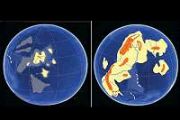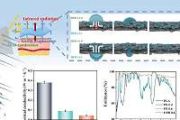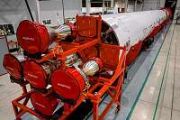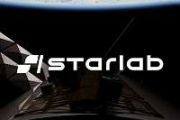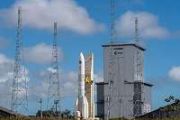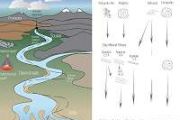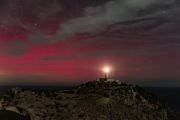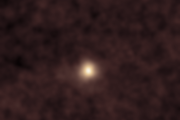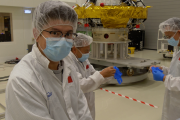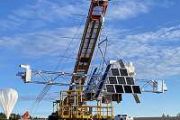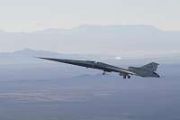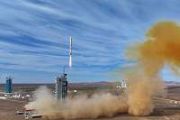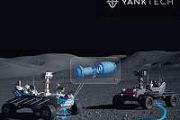
Copernical Team
Ministerial Council 2025

Ministerial Council 2025
Satellites and AI equip policymakers to assess global climate adaptation progress
 A study led by the University of Galway's Ryan Institute details how satellite-based Earth observation and artificial intelligence enable objective monitoring of climate adaptation in the global agrifood sector.
Researchers analyzed how Earth observation data can be linked to indicators in the Global Goal on Adaptation, a Paris Agreement initiative to reduce climate vulnerability. Their wo
A study led by the University of Galway's Ryan Institute details how satellite-based Earth observation and artificial intelligence enable objective monitoring of climate adaptation in the global agrifood sector.
Researchers analyzed how Earth observation data can be linked to indicators in the Global Goal on Adaptation, a Paris Agreement initiative to reduce climate vulnerability. Their wo NATO allies ditch Boeing for new surveillance planes
 NATO countries have ditched plans to buy US-made Boeing aircraft to replace the alliance's ageing fleet of surveillance planes, after Washington pulled out of the programme, the Netherlands said Thursday.
The Western military alliance had announced in 2023 that members would acquire six Boeing Wedgetail jets in one of its "biggest-ever" joint purchases as it looked to bolster its capabiliti
NATO countries have ditched plans to buy US-made Boeing aircraft to replace the alliance's ageing fleet of surveillance planes, after Washington pulled out of the programme, the Netherlands said Thursday.
The Western military alliance had announced in 2023 that members would acquire six Boeing Wedgetail jets in one of its "biggest-ever" joint purchases as it looked to bolster its capabiliti How drones are altering contemporary warfare
 A new book by scholar and military officer Erik Lin-Greenberg examines the evolving dynamics of military and state action centered around drones.
In recent months, Russia has frequently flown drones into NATO territory, where NATO countries typically try to shoot them down. By contrast, when three Russian fighter jets made an incursion into Estonian airspace in September, they were interce
A new book by scholar and military officer Erik Lin-Greenberg examines the evolving dynamics of military and state action centered around drones.
In recent months, Russia has frequently flown drones into NATO territory, where NATO countries typically try to shoot them down. By contrast, when three Russian fighter jets made an incursion into Estonian airspace in September, they were interce 'The war of tomorrow will begin in space': Macron
 Modern conflicts are already being fought in space and the next wars will begin there, French President Emmanuel Macron said Wednesday, singling out the threat posed by Russia and announcing a multi-billion euro increase in spending on military activities in space.
"The war of today is already being fought in space, and the war of tomorrow will begin in space," Macron said in Toulouse, Franc
Modern conflicts are already being fought in space and the next wars will begin there, French President Emmanuel Macron said Wednesday, singling out the threat posed by Russia and announcing a multi-billion euro increase in spending on military activities in space.
"The war of today is already being fought in space, and the war of tomorrow will begin in space," Macron said in Toulouse, Franc 'Splinternets' threat to be avoided, says web address controller
 The risk of the internet fragmenting into national "splinternets" will likely be averted in a UN vote next month, the head of the authority that manages web addresses told AFP on Tuesday.
"The vast majority of the countries that we have met with, including countries who in the past have been very sceptical... believe the current model of governing the internet has worked," Kurtis Lindqvist,
The risk of the internet fragmenting into national "splinternets" will likely be averted in a UN vote next month, the head of the authority that manages web addresses told AFP on Tuesday.
"The vast majority of the countries that we have met with, including countries who in the past have been very sceptical... believe the current model of governing the internet has worked," Kurtis Lindqvist, 6 Things to Know From NASA About New US, European Sea Satellite
 Data from Sentinel-6B will continue a decades-long record of sea surface height, helping to improve coastal planning, protect critical infrastructure, and advance weather forecasts.
With launch set for no earlier than 12:21 a.m. EST Monday, Nov. 17, Sentinel-6B is the latest satellite in a series of spacecraft NASA and its partners have used to measure sea levels since 1992. Their data has
Data from Sentinel-6B will continue a decades-long record of sea surface height, helping to improve coastal planning, protect critical infrastructure, and advance weather forecasts.
With launch set for no earlier than 12:21 a.m. EST Monday, Nov. 17, Sentinel-6B is the latest satellite in a series of spacecraft NASA and its partners have used to measure sea levels since 1992. Their data has China returns research samples from space station to Earth for study
 China's space station has delivered 46.67 kilograms of scientific samples from 26 experiments for analysis on Earth, according to the Technology and Engineering Center for Space Utilization (CSU) under the Chinese Academy of Sciences.
This ninth transfer of materials saw the Shenzhou-21 return capsule bring back samples from research in life sciences, materials science, and combustion.
China's space station has delivered 46.67 kilograms of scientific samples from 26 experiments for analysis on Earth, according to the Technology and Engineering Center for Space Utilization (CSU) under the Chinese Academy of Sciences.
This ninth transfer of materials saw the Shenzhou-21 return capsule bring back samples from research in life sciences, materials science, and combustion. Resupply spacecraft prepared for Tiangong station after safe crew return
 The China Manned Space Agency is preparing to launch the unmanned Shenzhou XXII spacecraft, which will deliver provisions and equipment to the Tiangong space station. A senior engineer confirmed on Saturday that teams are actively testing rocket systems, spaceship hardware, and preparing various payloads for the mission.
The Shenzhou XXII cargo mission will dock with Tiangong after launch.
The China Manned Space Agency is preparing to launch the unmanned Shenzhou XXII spacecraft, which will deliver provisions and equipment to the Tiangong space station. A senior engineer confirmed on Saturday that teams are actively testing rocket systems, spaceship hardware, and preparing various payloads for the mission.
The Shenzhou XXII cargo mission will dock with Tiangong after launch. New radiation-tolerant microcontrollers introduced for satellite constellations
 Vorago Technologies announced the release of four new radiation-tolerant microcontrollers designed for low Earth orbit applications, with first shipments expected in early Q1 2026. These chips address the reliability needs of satellite constellations while reducing costs by up to 75% compared to traditional space-grade electronics.
The VA4 family of microcontrollers uses ARM Cortex M4-base
Vorago Technologies announced the release of four new radiation-tolerant microcontrollers designed for low Earth orbit applications, with first shipments expected in early Q1 2026. These chips address the reliability needs of satellite constellations while reducing costs by up to 75% compared to traditional space-grade electronics.
The VA4 family of microcontrollers uses ARM Cortex M4-base 



